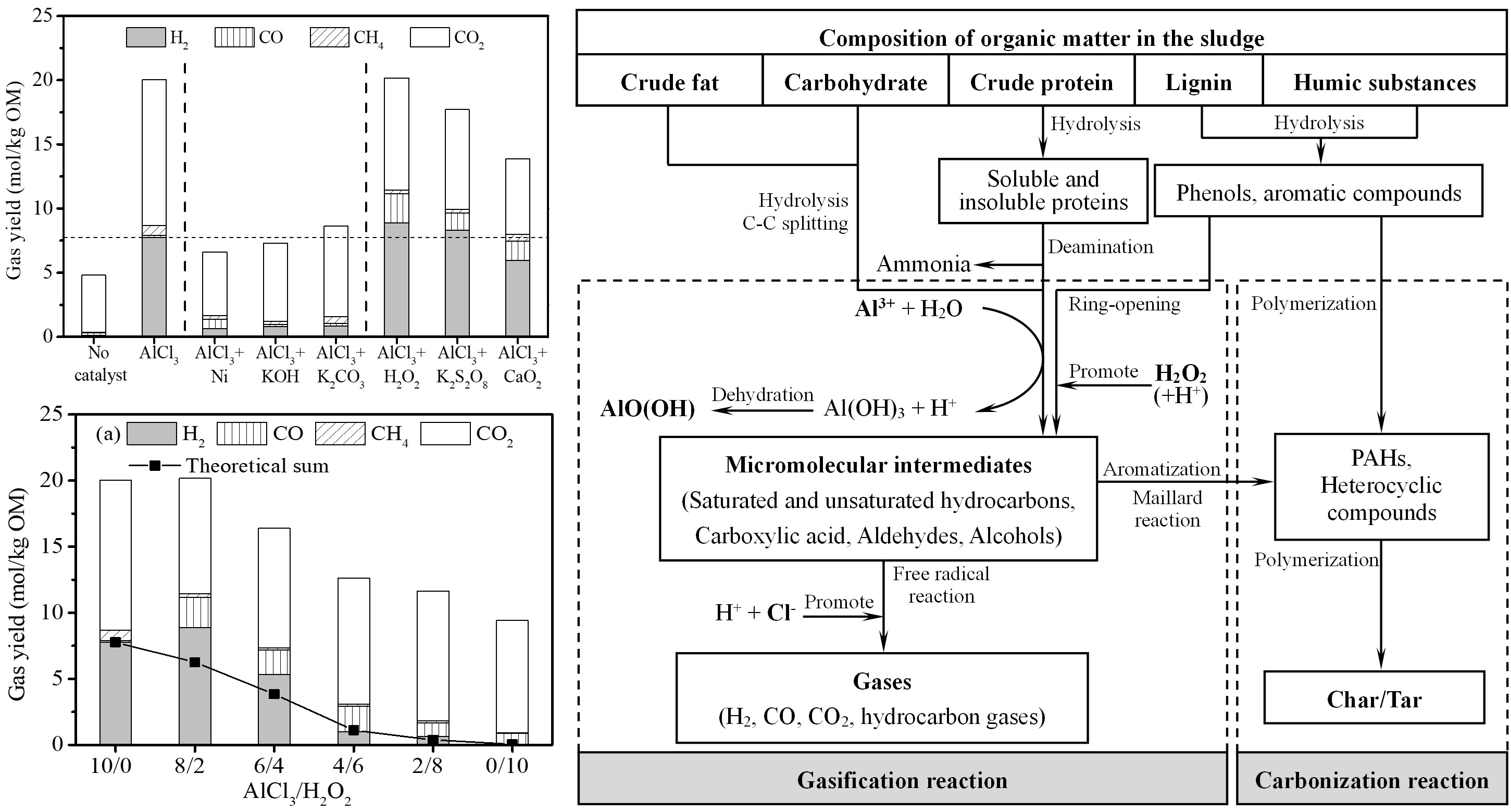Influence of AlCl3 and oxidant catalysts on hydrogen production from the supercritical water gasification of dewatered sewage sludge and model compounds
- DOI码:10.1016/j.ijhydene.2021.07.028
- 发表刊物:International Journal of Hydrogen Energy
- 摘要:Hydrogen has attracted significant attention as a clean energy source. Supercritical water gasification (SCWG) technology can produce hydrogen-rich gas while also disposing of sludge. The hydrogen yield from the SCWG of sludge is greatly increased when catalyzed by AlCl3. In this paper, a combined catalyst based on AlCl3 was proposed to further increase the hydrogen yield of SCWG of dewatered sewage sludge (DSS). Analysis of the products from catalytic gasified of DSS and its model compounds were used to propose a catalytic mechanism and reaction pathway of the catalytic SCWG of DSS. Among the combined catalysts used for the SCWG of DSS, 10 wt% AlCl3–H2O2 (mass ratio 8:2) had the best hydrogen production effect, and the hydrogen yield reached 8.88 mol/kg organic matter. This was 14% higher than when catalyzed by 10 wt% AlCl3. During catalysis with AlCl3, Al3+ reacted with OH− in water and precipitated as Al(OH)3, which produced an acidic environment in the liquid product. Al(OH)3 dehydrated to form an AlO(OH) and deposited in the solid product. A small amount of H2O2 promoted the steam reforming reaction of organic matter in DSS, which increased the hydrogen yield. H2O2 further promoted the hydrogen yield in an acidic environment. The catalytic effect of AlCl3 was unaffected by H2O2. The H+ generated by AlCl3 during catalysis promoted H2O2 to further depolymerized organic matter (such as humic substances) in DSS, so that AlCl3–H2O2 catalyzed the SCWG of DSS to further increase the hydrogen yield. The order of hydrogen yield catalyzed by AlCl3–H2O2 was guaiacol > humic acid > glycerol > alanine > glucose. Compared with AlCl3, AlCl3–H2O2 reduced the hydrogen yield of glucose by nearly 20% and increased the hydrogen yield of humic acid by about 17% (25.81 mol/kg feed).
- 卷号:46
- 期号:61
- 页面范围:31262-31274
- 是否译文:否
- 发表时间:2021-07-25
- 收录刊物:SCI
- 发布期刊链接:https://www.sciencedirect.com/science/article/pii/S0360319921026094
附件:
He-Final.pdf
